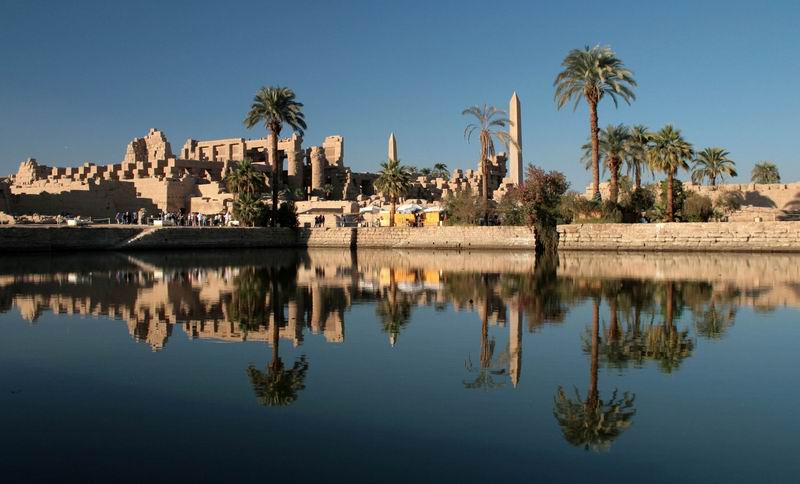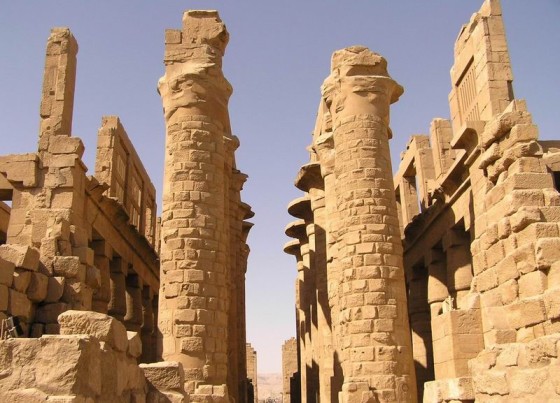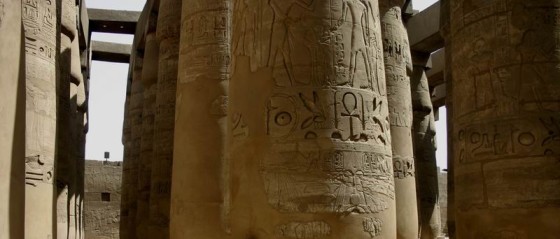
Marveled as the open-air museum, the Karnak temple refers to the enormous complex that engulfs pylons (monumental gateways), chapels, ruined temples, as well as other structures including the big structure commissioned by Pharaoh Amenhotep III (1391-1351 BC) and the majestic Temple of Amen. The entire site in Luxor is devoted to Amun, the main Egyptian deity.

This impressive sight dates back to 2000 BC and is second most visited site after the Pyramids of Giza in Egypt. Nestled at a distance of 500 km from Cairo, the Karnak Temple is actually in the area that was formerly the old Egyptian Ipet-isut meaning the (Most Sacred Places). Actually, this site was prime worship location of the Theban Triad.
Structurally, the complex encompasses four major precincts of which the largest is the one of Amun-Re that is the only part open to public. While the remaining three are closed to the public: the Precinct of Mut, the Precinct of Montu, and the crumbled Temple of Amenhotep IV. Just outside the bordering walls of these parts are some smaller temples, sanctuaries, as well as several avenues of sphinxes as well as humans; which connect to the Luxor Temple.

The Karnak Temple is unique as compared to the other historic Egyptian sites in the sense that it took a very long time to build, which involved 30 pharaohs in its construction phases. Dedicated to Amun-Re is the Precinct of Amun-Re who was the main deity of the Theban Triad. This holy temple along the two east-west and north-south axes is carved from sandstone of Gebel Silsila that was brought here from the site at 100 miles on the Nile bank. The quay acts as the entrance from the west, which was formally an opening via a canal. To the right, a small chapel of Hakoris is seen, which was the resting place when the ceremonial processions of the gods were carried out to and from the Nile.

From the quay, an avenue of ram-headed sphinxes (The Sacred Way) indicating Amun leads one to the first pylon that is in an incomplete state. A statue of king lies in between each of them at the paws. And also look for the largest obelisk of 29 m in height here.
The Precinct of Montu is to the north of the Amun-Re. comparatively smaller, this area is dedicated to Montu who was the Theban war god as well as the son of Amun-Re and Mut. This was where a treasury was built by Tuthmosis I in form of a structure in the exterior of the east border wall. Upon discovery, it was found that this was the home of storerooms as well as workshops.
The Precinct of Mut is to the south of the Amen-Re precinct and as the name suggest, this is dedicated to Mut who was revered as the Egyptian mother goddess. Within this complex, there exists a holy lake in the shape of crescent named Isheru, the temple of Mut, the temple of Nectanebo II, the temple of Ramesses III, the temple of Khonspekhrod, and the barque shrine of Thutmose III and Hatshepsut. In addition, outside is the sanctuary of Amun-Kamutef.

The dismantled Temple of Amenhotep IV was made by Akhenaten (Amenhotep IV) and is today seen in the east of the main complex.
Do also visit the Hypostyle Hall from the second pylon, which is the most popular engineering feat here representing the ancient papyrus swamp. There are 134 columns of which 12 are tall, central ones; but soar as high as up to 21 m. Among them, the larger ones boast open papyrus capitals, whereas the smaller ones possess the closed capitals.
Getting to here
Take up an organized coach tour or a public minibus for 25 pt at the Luxor Bus Station. Alternatively, you can also hire a taxi for £E10 from Luxor.

Admission
£E50 adults
£E25 students
Facilities
Cafe close to the Sacred Lake, open-air museum, and toilets near grandstand.
Timings
Summer: 6 am to 6:30 pm
Winter: 6 am to 5:30 pm
